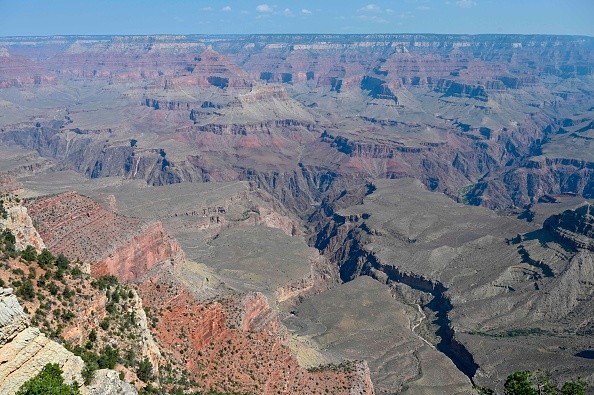Scientists employed ice-core and soil samples to learn about things that took place on Earth millions and millions of years ago. However, a strange event occurred around a billion years ago, but experts are unable to find any information about it.

Theories About the Strange Event
As the most extreme example of this phenomena, rocks throughout the planet seem to have the great unconformity.
About 550 million-year-old rocks exist atop 1.7 billion-year-old layers as a result of the massive erasure in Earth's memory, which extends over one billion years in certain locations. Now, scientists believe they have found the missing disparity.
A large part of the Neoproterozoic epoch was wiped clean by this massive geological blackout, which scientists have been debating for more than a century.
There are two possible reasons, none of which is definitive: One theory attributes the Unconformity's formation to tectonic activity linked with Rodinia's assembly and breakup, while another attributes it to erosion caused by widespread glaciation 700 million years ago during Earth's "Snowball Earth" period.
Formation of the Great Unconformity
According to VICE, in four different geological locations across North America, researchers found a powerful cooling signal, suggesting that continental-scale glaciation may be "the only foreseeable process that can account for both the formation and preservation of the Great Unconformity," as per a study published in The Proceedings of the National Academy of Sciences on Tuesday.
McDannell and C. Brenhin Keller, an assistant professor of earth sciences at Dartmouth and a co-author of the study, said in a joint call that something really unique was going on in terms of global geodynamics and surface processes that allowed the great unconformity to both form and then be preserved.
Tectonic erosion has been documented in areas like Pikes Peak, Colorado, and the Ozark Plateau in Missouri, which were along active fault lines 700 million years ago, in previous research on this enormous gap in time.
They broadened their reach to include rocks from East Lake Athabasca in Saskatchewan, Canada, and the Minnesota River Valley, both of which were remote from any tectonic activity during this ancient age, according to Raw Story.

Evidence of Synchronous Rock Cooling
The team studied published thermochronology data from these various regions and found evidence of synchronous rock cooling that is linked to glacial erosive processes.
It is possible that tectonic activity may have contributed to the great unconformity in some areas, but the researchers concluded that glaciation is the only process that could have obliterated miles of geological layers in so many different places.
However, even though this new study supports the glacial hypothesis for the great unconformity, the team hopes to examine samples from several areas around the world to gain an even better understanding of the forces that devoured these lost years.
Additional research may shed light on how sophisticated life first appeared on Earth and how it evolved over the course of geological time.
Approximately 550 million years ago, just before the emergence of sophisticated life on Earth, there was a large void in the geological record. The time of the great unconformity and the development of modern species has fascinated scientists for years, even though there is no documented link between the two.
For more news, updates about geological blackout and similar topics don't forget to follow Nature World News!
© 2025 NatureWorldNews.com All rights reserved. Do not reproduce without permission.





